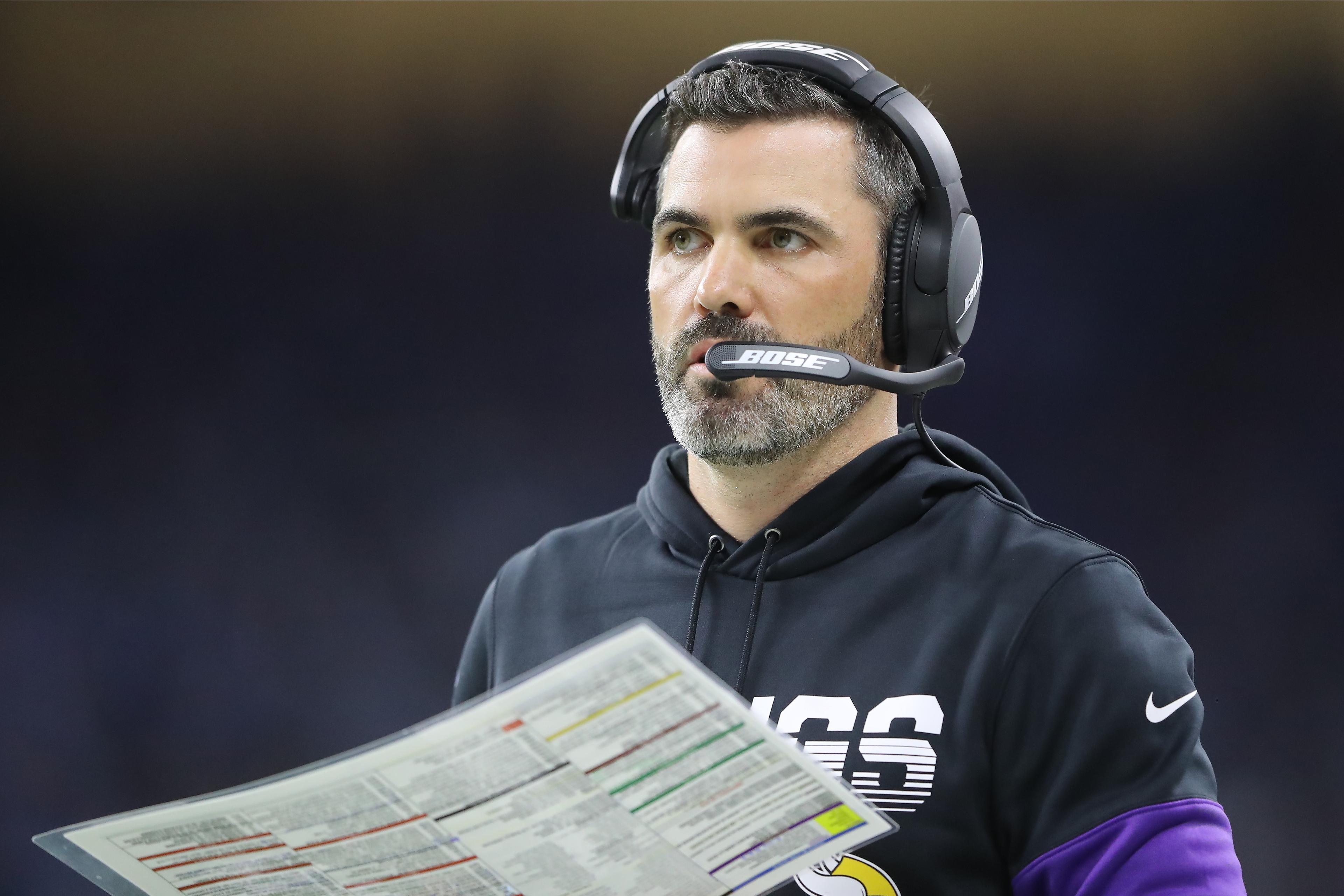The Browns’ Hiring of Kevin Stefanski Is Boring—but That May Be Exactly What Cleveland Needs
There were plenty of more interesting head coaching candidates left for Cleveland to consider, but Stefanski—whom the Browns are reportedly planning to hire—represents a chance at organizational harmony
The last seat available in the NFL’s annual game of musical chairs has been filled. The Browns have landed on their head coach of the future, and it’s not Josh McDaniels, Greg Roman, Robert Saleh, or any of the other high-profile names that have swirled around the rumor mill recently. Instead, Cleveland is reportedly set to hire Vikings offensive coordinator Kevin Stefanski, according to NFL Network’s Ian Rapoport.
Stefanski has been with the Vikings organization since 2006, and at various times coached the team’s running backs, tight ends, and quarterbacks. He was made the interim offensive coordinator late in the 2018 season and kept the job for 2019. He’s leaving Minnesota for the first time in 14 years, and heading to a team with enticing talent but also incredible dysfunction. Stefanski is a boring hire—but boring may be exactly what the Browns need.
This hire was a year in the making. The Browns interviewed Stefanski last offseason, and chief strategy officer Paul DePodesta wanted to hire him. But then-general manager John Dorsey overruled DePodesta and the franchise went with Freddie Kitchens, who turned out to be a disaster.
Before even getting into the nuts and bolts of Stefanski’s coaching philosophy, the most important thing Stefanski can bring to the Browns is harmony. Dorsey and Kitchens are gone, which means 2020 is a chance for the Browns to end the long-standing schism in the front office between the analytics-minded DePodesta and the more traditional Dorsey. It appears Cleveland has found its path.
The Browns are also reportedly trying to bring back Eagles vice president Andrew Berry—who was the VP of player personnel for the Browns until this season—to be their new general manager. Berry “got to know” Stefanski during last season’s coaching search, per Cleveland.com’s Mary Kay Cabot. A team of DePodesta, Stefanski, and Berry would provide front-office unity that coach Jimmy Haslam has yet to experience in Cleveland. That alone fills the Stefanski hire with promise.
There is a lot to like about Stefanski as a football mind. While the tape from the team’s divisional-round loss to the 49ers is about as ugly as imaginable, the Vikings finished with the league’s 10th-best offense by DVOA, slotting 10th in passing and 15th in rushing efficiency. The team scored the eighth-most points and picked up the 16th-most yards, both improvements on 2018.
Stefanski worked with former Texans and Broncos head coach Gary Kubiak, who is the assistant head coach in Minnesota, to create a Kubiakian-style scheme that marries the running game and the passing game. Kubiak has influenced offensive play-callers like Kyle Shanahan and Sean McVay who seek to make the run and pass looks appear exactly the same, and Stefanski emphasized elements like play-action passing and rollouts that are essential elements in a Kubiak offense.
Stefanski sums up this philosophy best: In October, Stefanski told NFL Network’s Tom Pelissero his plays need to “look like, taste like, and smell like the run.”
Setting Saturday’s underwhelming divisional-round result aside, Stefanski’s offense mostly worked. Quarterback Kirk Cousins used play-action on 31.4 percent of his dropbacks, the fifth-highest mark in the NFL. The four quarterbacks above him (Lamar Jackson, Jared Goff, Patrick Mahomes, and Jimmy Garoppolo) all have heralded play-callers calling the shots. Play-action just works—it’s the most efficient play in the league and it should probably be used more. Stefanski surely understands this, and he’s shown an interest in analytics, too, which makes him a great fit with DePodesta:
The Vikings’ play-action game was particularly effective. Off play-action attempts, Cousins racked up 1,373 passing yards, 14 touchdowns, and two interceptions. He averaged 9.7 yards per attempt (tied for third leaguewide) and had a passer rating of 129.2 (first).
Browns quarterback Baker Mayfield used play-action on 28.7 percent of his dropbacks, which was ninth highest—so it’s not like the Browns are strangers to the play-action game. But Mayfield did average 2.6 more yards per attempt when using play-action than when not, the third-largest differential in the NFL, so more play-action could help the Browns offense.
The emphasis on the run and play-action helped the Vikings attack downfield. Cousins threw 20-plus yards downfield on 13.7 percent of his pass attempts, the eight-highest percentage in the league. Mayfield actually attacked downfield more—he went deep on 14.2 percent—but the difference was in each quarterback’s effectiveness. Cousins had nine touchdowns and one interception on deep throws while Mayfield had seven touchdowns and seven interceptions. One of Stefanski’s first tasks in Cleveland will be figuring out how to make the most of Mayfield and Odell Beckham Jr. and clean up the Browns’ sloppy deep attack.
There are also less admirable pieces of Stefanski’s Minnesota offense. The Vikings were more efficient at passing than running (even more than just about every other team, given that passing is generally more efficient than rushing), and yet they were 30th in pass attempts and fourth in rushing attempts. Minnesota worked so hard to establish the run they ran themselves out of games. Yet this tendency may have more to do with head coach Mike Zimmer than Stefanski, as Zimmer has repeatedly stressed his belief that teams need to stick to the run. Zimmer was particularly frustrated with the lack of running game in the weeks before firing offensive coordinator John DeFilippo in 2018, and that firing led to Stefanski getting the job in the first place.
Stefanski will now have a chance to run a scheme that is entirely his own. There is no telling whether he’ll be able to solve the Browns’ dysfunction—but for now, it at least looks like the franchise is moving in the right direction.

